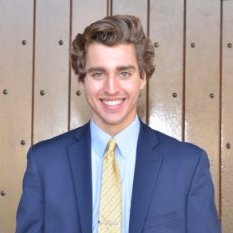About Me
I am in my sixth year as a graduate student in the Laboratory for Nuclear Science at MIT, studying Experimental Nuclear and Particle Physics.
My PhD, under the supervision of Professor Or Hen, currently focuses on two projects: (1) understanding in-medium proton structure and how the medium-modification might relate to highly virtual nucleon states, (2) studying the residual state of the nucleus when a hard-knockout of two correlated, high momentum, short distance nucleons occurs with some probe (electron, proton, or photon).
More about my reserach
(1) The EMC effect is a decades-old open question in nuclear/particle physics centered on why quarks inside of bound nucleons behave drastically different than quarks in free nucleons (like a free proton). While there is no generally accepted explanation for the EMC effect, my research focuses on a possible connection between nucleon-constituent (quarks and gluons) modification and highly virtual nucleon states. To study this, I ran an experiment at Jefferson Lab in Hall B, E12-11-003A, which studies the proton structure in deep-inelastic scattering while tagging on highly virtual proton states. This allows us to see how proton structure can evolve with proton virtuality, and if there is any dependence, this could hint at a solution to the EMC effect. To do this experiment, I was in charge of constructing a neutron detector (called BAND: backward-angle neutron detector), and I took the lead of designing, constructing, calibrating, and running the detector. The detector is roughly 2 meters by 2 meters by 50 centimeters and has 240 readout channels. I am currently working with a post-doc and another graduate student to analyze the data we gathered with the BAND. In connection to this work, our group developed a phenomenological model to explore the EMC-SRC connection (CLAS Collaboration, "Modified structure of protons and neutrons in correlated pairs", Nature 566 (2019) no.7744, 354-358). While this work was data-driven, I performed a follow-up global analysis of DIS (deep-inelastic scattering) and QE (quasi-elastic) data to extract our phenomenological model. See publications for more details!
(2) Although our group has lead the field in understanding highly virtual nucleonic states, what still remains a mystery is: What happens to the nucleus after we probe and knock-out these highly virtual nucleons? To study this, we require that the residual nucleus has enough energy to be detected in some spectrometer system, which is currently infeasible with fixed-target experiments. That is why I carried out an experiment at the Joint Institute for Nuclear Research in Dubna, Russia to probe this question. This facility makes use of inverse kinematics -- where instead of having a probe beam (electron, proton, or photon) on a nuclear target, we accelerate the nucleus in a beam and throw it at a fixed-probe-target. In this way, the residual nucleus beam has enough momentum to be detected in a forward spectrometer system. The data for this experiment was taken in early 2018, and I am currently working with an international collaboration on the analysis. We are in the final stages of the analysis.
Contact
Laboratory for Nuclear Science
MIT Building 26-433
77 Massachusetts Ave.
Cambridge, MA 02139


